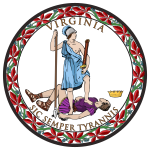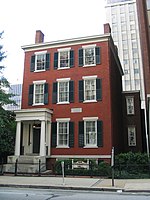St. Peter's Church (Richmond, Virginia)

St. Peter's Pro-Cathedral of Richmond, Virginia, United States, located at 800 E. Grace St., is the oldest Catholic Church in Richmond. From the erecting of the Roman Catholic Diocese of Richmond in 1850 until the completion of the Cathedral of the Sacred Heart in 1906, St. Peter's Church served as the cathedral and seat of the diocese. Originally, the church was predominantly Irish American. The church continues to serve a congregation of approximately 300 today.After the Civil War, St. Peter's basement hosted the city's "colored Catholics." The 13-member congregation included Emily Mitchell (Indian-looking and born into slavery in 1824, brought from Baltimore and who later served Bishop James Gibbons), Julia Grandison (baptised in Georgia and brought to Richmond at age 9), Moses Marx (who began driving Bishop John Keane's buggy at age 12), Liza Marx (who learned to read and reminded the judge reading her mistress' will that he forgot the lines bequeathing money to Elizabeth Thompson and her next child of issue), and Julia Flippen and her children. When the congregation had increased to about 50, including children, Bishop Keane signed a deed for what became St. Joseph's Church on Shockoe Hill, also invited the Josephite Fathers from Mill Hill, London, for help in furthering that apostolate.In 2020 the parish was designated a Pro-Cathedral as part of the Diocese of Richmond bicentennial celebration.
Excerpt from the Wikipedia article St. Peter's Church (Richmond, Virginia) (License: CC BY-SA 3.0, Authors, Images).St. Peter's Church (Richmond, Virginia)
North 8th Street, Richmond Shockoe Slip
Geographical coordinates (GPS) Address Nearby Places Show on map
Geographical coordinates (GPS)
| Latitude | Longitude |
|---|---|
| N 37.540555555556 ° | E -77.435555555556 ° |
Address
8th & Grace
North 8th Street
23219 Richmond, Shockoe Slip
Virginia, United States
Open on Google Maps











